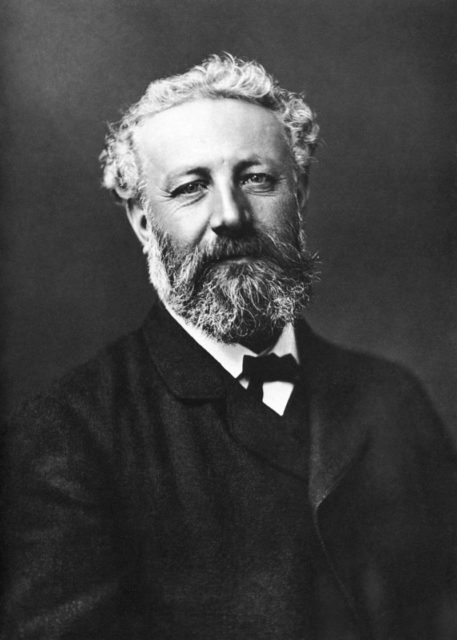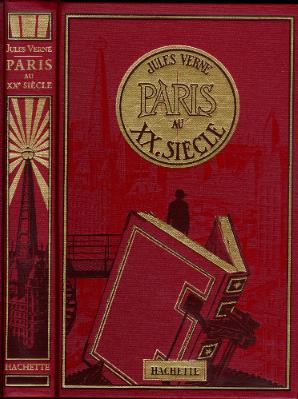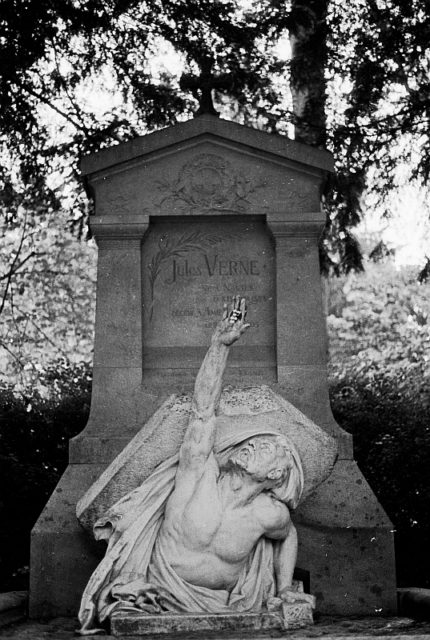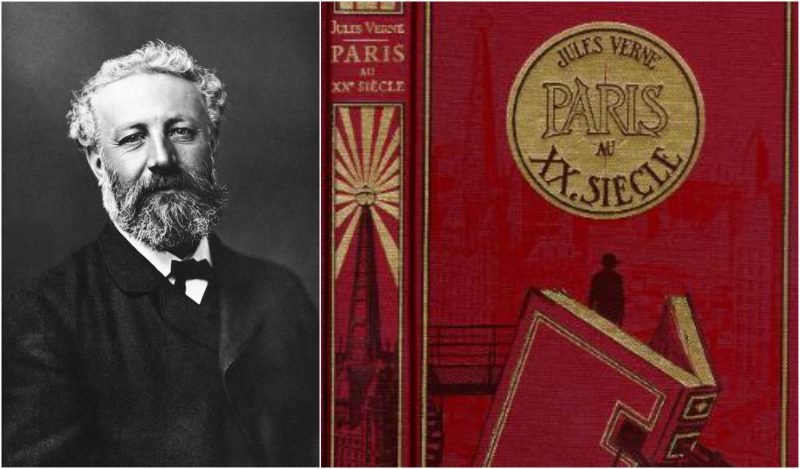Jules Verne was a French writer, born in Nantes in 1828, and is considered by many to be the father of science fiction. In Europe, he is an influential figure in the schools of surrealism and avante-garde. In America, he is a beloved children’s writer (this difference in perception comes down to the highly altered and abridged English translations of his work), but wherever you are, you’ve almost certainly heard of him.

Some of his most famous books include “Journey to the Centre of the Earth”, “20,000 leagues under the sea”, and “Around the World in Eighty Days”, all of which have seen multiple film adaptations.
However, among his many works, one stands apart: “Paris in the Twentieth Century”. It was written in 1863 but not published for the first time until 1994, after the manuscript was re-discovered in an old safe by Verne’s descendant, Jean Jules-Verne. The book, which presents a dystopian view of a 1960’s Paris, is considered to be Vern’s lost book. Vern’s publisher, Pierre-Jules Hetzel, didn’t like it, deeming it to be too “science fiction” and not believable enough, and so it remained unreleased.
If only his publisher could see how that “science fiction” turned into our reality. Certainly, he would have been surprised by just how accurate Vern’s detailed description of a city almost 150 years in the future really was.

In the novel, Vern describes an urban structure that is unerringly similar to that of the real 1960’s Paris. There are cars working on internal combustion engines (“gas-cabs”), stations where the cars can get the fuel, asphalt roads, high-speed trains, “picture-telegraphs” (fax machines), elevators, “sophisticated powered mechanical calculators” (computers) that work in a network and through which information can be shared between people at a distance (Internet); automated security systems, wind power, electric chairs, remotely-controlled weapons systems, nuclear weapons (he describes the nuclear weapon as something so destructive that would make the thought of war utterly apocalyptic), hotels, shopping centers, electronic music and so on. He just gave these systems different names.
Despite all of this advancement, Verne’s future society is cold and hollow; with art, literate, and other creative endeavors forgotten and rejected in favor of materialism and an obsession with technology and business. In addition, it predicts that the entertainment industry would be dominated by lewd stage plays, often involving nudity and sexually explicit scenes. Therein lie the dystopian aspects of the novel.

So was Jules Verne simply a pessimist who couldn’t see how any of that wonderful technology could produce humane qualities and nourish a healthy human spirit? Or did he, in fact, predict the social world we live in just as accurately as he did the technological one?
